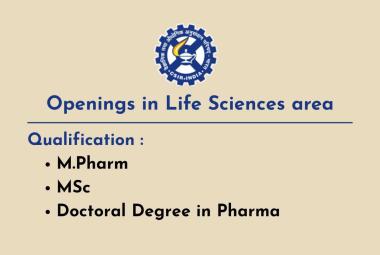PharmaTutor (March- 2014)
ISSN: 2347 - 7881
Received On: 15/01/2014; Accepted On: 22/01/2014; Published On: 05/03/2014
Author: Tapan Behl*, Ishneet Kaur, Puneet Sudan, Monika Sharma, Dr. Heena Goel
Assistant Professor, Department of Pharmacology,
Doaba Group of Colleges, Kharar, Mohali, Punjab, India
tapanbehl31@gmail.com
ABSTRACT:
Von Hippel-Lindau (VHL) syndrome is a rare genetic neoplastic disorder, arising from germline mutations in the VHL gene, characterized by the development of visceral cysts, specific benign and malignant tumors in multiple organ systems that have subsequent potential for spiteful change. It is caused by point mutations or deletions in a tumor suppressor gene. A tumor suppressor gene is the one which keeps cells from growing and dividing too rapidly in an uncontrolled way. Mutations in this gene prevent production of the VHL protein or lead to the production of an abnormal version of the protein. An altered or missing VHL protein cannot effectively regulate cell survival and division. As a result, cells grow and divide uncontrollably to form tumors and cysts that are characteristic of Von Hippel-Lindau syndrome. Although there is great variation in the clinical presentation, those who have a mutated gene are at greatly increased risk of developing spinal hemangioblastoma, renal cell carcinoma (RCC), retinal hemangioblastoma, cerebellar hemangioblastoma, pheochromocytoma, pancreatic and renal cysts, endolymphatic sac tumors, hemangiomas of the adrenals, liver and lungs, and papillary cystadenoma of the epididymis or broad ligament. The age at which the tumors present ranges from early childhood to the seventh decade of life. Early diagnosis, screening of family members and lifelong surveillance of VHL patients is recommended.
How to cite this article: T Behl, I Kaur, P Sudan, M Sharma, H Goel, Von Hippel-Lindau (VHL) Syndrome: A Critical Insight, PharmaTutor, 2014, 2(3), 114-118
[ABSTRACT WITH CITATION] [VIEW AS HTML]

REFERENCES:
1. Maher ER, Iselius L, Yates JR, Littler MD, Benjamin C, Harris R, Sampson J, Williams A, Ferguson-Smith MA and Morton N: Von Hippel-Lindau disease: A genetic study. J. Med. Genet. 1991, 28: 443-447.
2. Linehan WM, Lerman MI and Zbar B: Identification of the Von Hippel-Lindau (VHL) gene: its role in renal cancer. J. Am. Med. Assoc. 1995: 273: 564-570.
3. Maher ER and Kaelin G: Von Hippel-Lindau disease:Reviews in molecular medicine. Medicine 1997, 76: 381-391.
4. Melmon K and Rosen S: Lindau’s disease. Am. J. Med. 1964, 36: 595-617.
5. Ginzburg BM, Montenera WJL, Tyndel FJ, Griesman JA and McKlennan MK: Diagnosis of Von Hippel-Lindau disease in a patient with blindness resulting from bilateral optic nerve hemangioblastomas. Am. J. Roentgenol. 1996, 159: 403-405.
6. Kovacs G and Ishikawa T: High incidence of papillary renal cell tumors in patients on chronic haemodialysis. Histopathology 1993, 22:135-139.
7. Lonser RR, Glenn GM, Walther M, Chew EY, Libutti SK, Linehan WM, Oldfield EH.: Von Hippel-Lindau disease. Lancet 2003, 361: 2059-67.
8. Maher ER., Neumann HP, Richard S: Von Hippel-Lindau disease: a clinical and scientific review. Eur J Hum Genet. 2011, 6: 617-23.
9. Richard S, Graff J, Lindau J, Resche F : Von Hippel-Lindau disease. Lancet 2004, 363: 1231-4
10. Sano T, Horiguchi H : Von Hippel-Lindau disease. Microsc. Res. Tech. 2003, 60:159-64.
11 Huin T, Yamasaki T, Tamura K, Okuda H, Furihata M, Ashida S: Von Hippel-Lindau disease: molecular pathological basis, clinical criteria, genetic testing, clinical features of tumors and treatment. Jpn. J. Clin. Oncol. 2006, 36: 337-43.
12. Kaelin WG: The Von Hippel-Lindau gene, kidney cancer and oxygen sensing. J. Am. Soc. Nephrol, 2003,14: 2703-11
13. Gnarra JR, Duan DR, Weng Y, Humphrey JS, Chen DY, Lee S, et al.,: Molecular cloning of the von Hippel-Lindau tumor suppressor gene and its role in renal carcinoma. Clin. Oncol. 1996, 1242: 201-10.
14. Latif F, Tory K, Gnarra J, Yao M, Duh FM, Orcutt ML, et al., : Identification of the von Hippel-Lindau disease tumor suppressor gene. Science, 1993, 260: 1317-20
15. Kaelin WG JR: Molecular basis of the VHL hereditary cancer syndrome. Nat. Rev. Cancer,2002, 2: 673-82.
16. Abbott MA, Nathanson KL, Nightingale S, Maher ER, Greenstein RM: The von Hippel-Lindau (VHL) germline mutation V84L manifests as early onset bilateral pheochromocytoma. Am. J. Med. Genet. A. 2006, 140: 685-90.
17. Shuin T, Kondo K, Ashida S, Okuda H, Yoshida M, Kanno H, Yao M: Germline and somatic mutations in von Hippel-Lindau disease gene and its significance in the development of renal cancer. Contrib. Nephrol, 1999, 128: 1-10.
18. Asthagiri AR, Metha GU, Zach L, Li X, Butman JA, Camphausen KA, Lonser RR: Prospective evaluation of radiosurgery for hemangioblastomas in von Hippel-Lindau disease. Neuro Oncol., 2010, 12: 80-6.
19. Bryant J, Farmer J, Kessler LJ, Townsend R.R., Nathanson KL: Pheochromocytoma: the expanding genetic differential diagnosis. J., Natl. Cancer Inst. 2003, 95: 1196-204.









